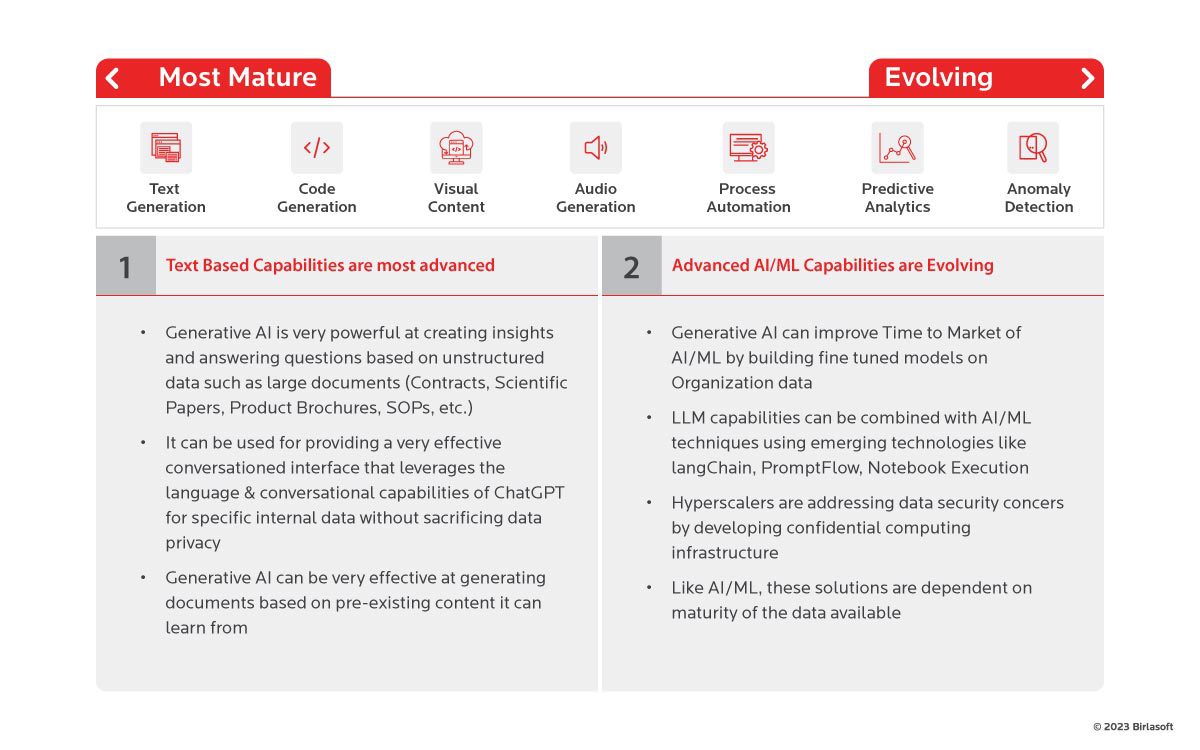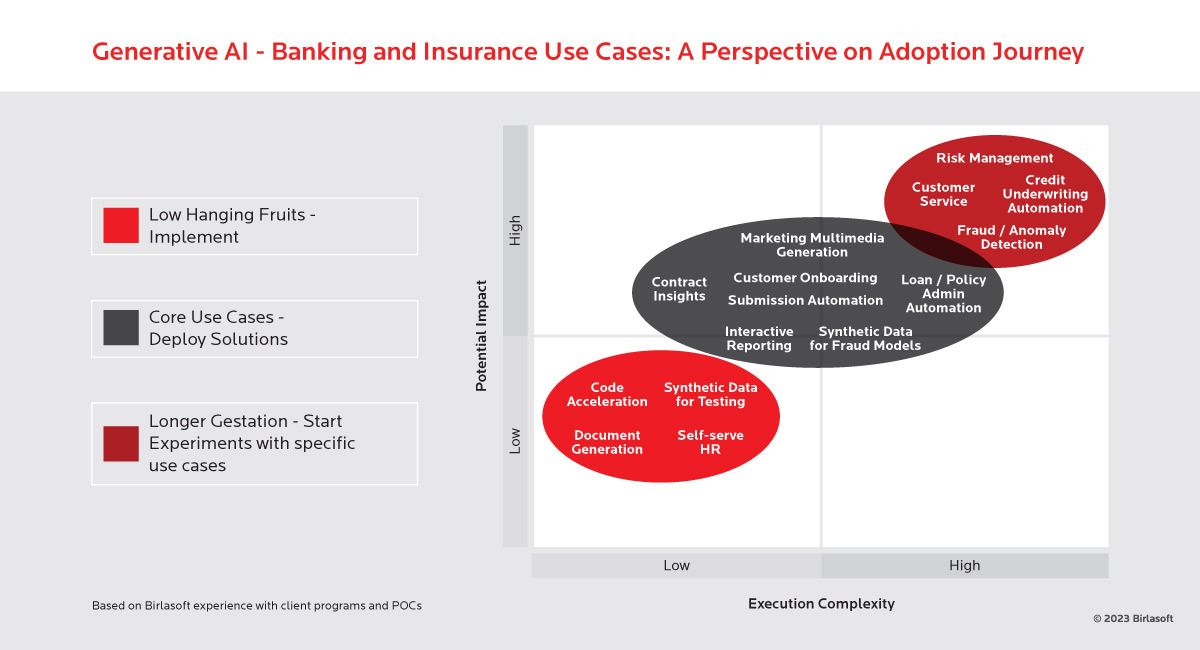The global Generative AI in BFSI is estimated to reach around USD 12,337.87 million by 2032. This remarkable growth projection underscores the profound impact of Generative AI in BFSI, harnessing the power of data analytics and automation to streamline operations, enhance efficiency and reduce costs. From enhancing customer experiences to simplifying complex data analysis and risk management, Generative Artificial Intelligence is unlocking new possibilities to drive growth and boost competitive advantage in the rapidly evolving industry.
Unlocking the Future of Generative AI in BFSI: Key Questions to Address
As BFSI organizations recognize the imperative to understand the far-reaching implications of the Generative AI application landscape, several key questions have arisen. What are the use cases for Generative AI that can provide a significant return on investment for BFSI institutions? What are the true capabilities of Generative AI, distinguishing between mature applications and those still in their infancy? Furthermore, what should be the adoption roadmap for Generative AI in BFSI? Which opportunities represent the low-hanging fruits and which are the complex challenges that demand strategic solutions?
With the BFSI sector standing at the crossroads of this technological revolution, organizations must carefully examine use cases, capabilities and adoption strategies to understand the transformative potential of this technology while navigating critical questions at the intersection of finance, AI and innovation.
Mature vs. Evolving: A Closer Look at Generative AI Capabilities
Generative AI for business has ushered in a new era of innovation, offering fresh perspectives and solutions to complex industry challenges. However, not all capabilities within the realm of Generative AI have reached the same level of maturity. The journey of enterprise adoption hinges on addressing critical concerns surrounding Return on Investment (ROI), data privacy and reputational risk. It is essential to understand the mature and emerging capabilities of Generative AI.

The Matured Capabilities
Text-based applications have emerged as the most advanced and influential Generative AI capabilities. Generative AI can extract insights and provide answers based on unstructured data sources, such as extensive documents like contracts, scientific papers, product brochures and Standard Operating Procedures (SOPs). It can transform these information repositories into valuable knowledge, enabling organizations to extract actionable insights from their vast document libraries.
It can create effective conversational interfaces that leverage its language and conversational capabilities, facilitating the development of specific, internal conversational tools, all while preserving data privacy. It can also generate documents based on pre-existing content, learning and adapting from the wealth of existing material, streamlining the content creation processes, and automating the generation of documents, reports and other textual materials to boost productivity significantly.
The Evolving Capabilities
While Generative AI's text-based capabilities have matured substantially, its advanced Artificial Intelligence and Machine Learning (AI/ML) capabilities are evolving. The ability of Generative AI to expedite the time-to-market for AI/ML solutions by constructing finely-tuned models using organizational data can help streamline the development and deployment of AI-driven systems, enhancing decision-making and business processes.
Generative AI, with its Large Language Model (LLM) capabilities, can be combined with AI/ML techniques using emerging technologies such as Langchain, Prompt Flow and Notebook execution to open up new avenues for advanced data processing, analysis and model development, pushing the boundaries in AI-powered solutions. Hyperscalers can actively develop confidential computing infrastructure to address data security concerns, assuaging data privacy and security fears. However, the effectiveness of these solutions remains closely tied to the maturity and quality of the available data.
Maximizing Potential: Birlasoft's Framework for BFSI Use Case Prioritization
Leveraging the mature and evolving capabilities of Generative AI, Birlasoft has developed a specialized framework to help BFSI organizations identify use cases with the potential to deliver substantial impact and ease of execution. The framework is tailored separately for the Banking and Insurance industries, acknowledging the nuanced variations in use cases between these sectors. Through this strategic approach, Birlasoft can empower BFSI organizations to harness the full potential of Generative AI.





